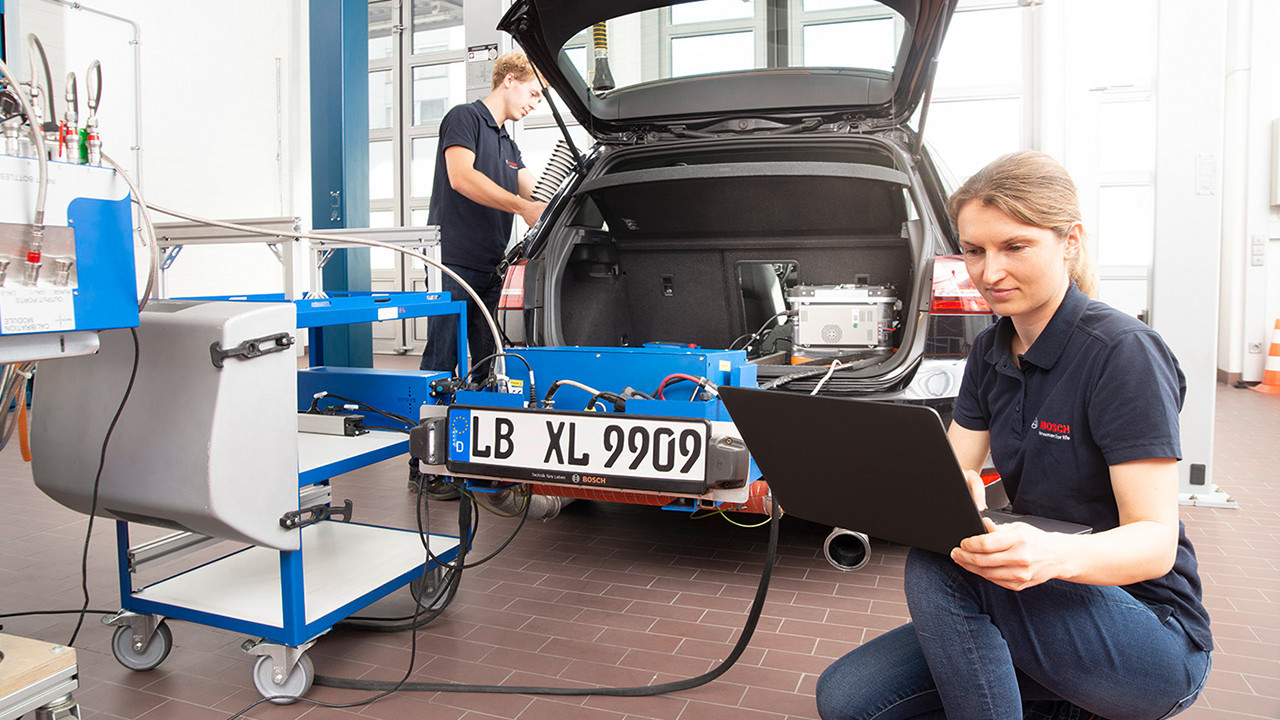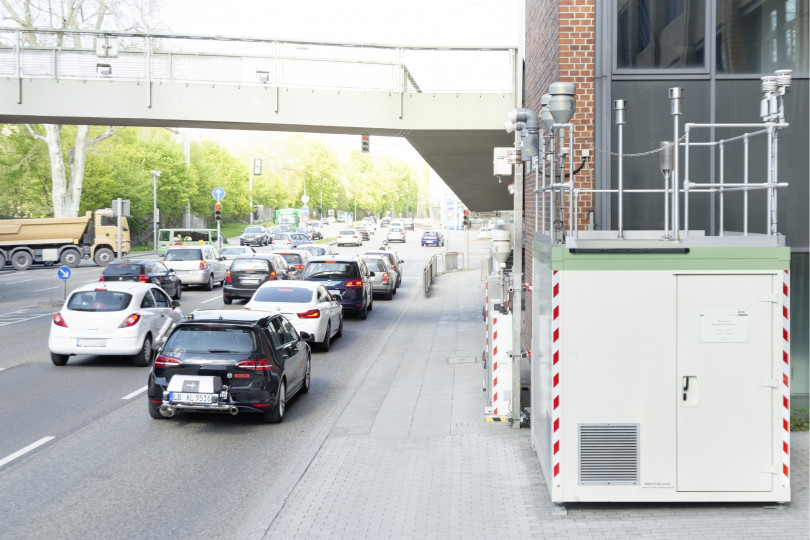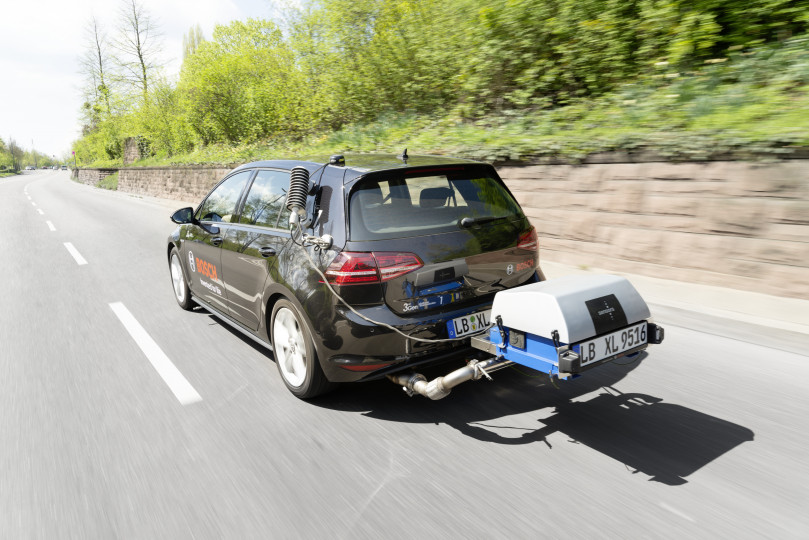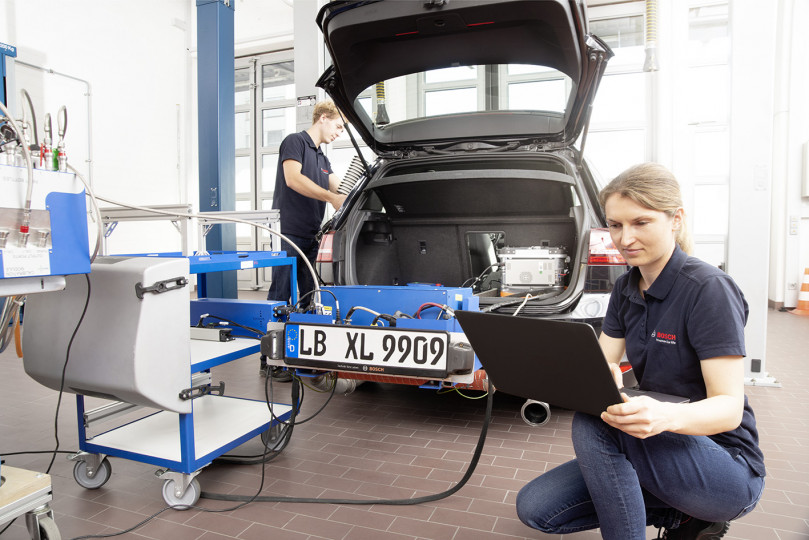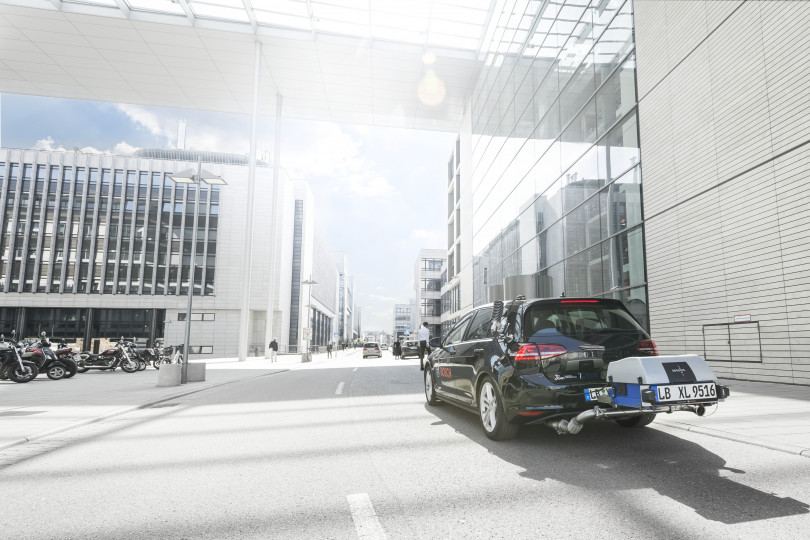Stuttgart and Renningen, Germany: “There’s a future for diesel. Today, we want to put a stop, once and for all, to the debate about the demise of diesel technology.” It was with these words that the Bosch CEO Dr. Volkmar Denner, speaking at the company’s annual press conference, announced a decisive breakthrough in diesel technology. New developments from Bosch could enable vehicle manufacturers to reduce emissions of nitrogen oxides (NOx) so drastically that they already comply with future limits. Even in RDE (real driving emissions) testing, emissions from vehicles equipped with the newly premiered Bosch diesel technology are not only significantly below current limits but also those scheduled to come into force from 2020. Bosch engineers achieved these results by refining existing technologies. There is no need for additional components, which would drive up costs. “Bosch is pushing the boundaries of what is technically feasible,” Denner said. “Equipped with the latest Bosch technology, diesel vehicles will be classed as low-emission vehicles and yet remain affordable.” The Bosch CEO also called for greater transparency with regard to the CO2 emissions caused by road traffic, and called for fuel consumption and thus CO2 emissions to be also measured under real conditions on the road in the future.
Record readings under real driving conditions: 13 mg NOx per kilometer
Since 2017, European legislation has required that new passenger car models tested according to an RDE-compliant mix of urban, extra-urban, and freeway cycles emit no more than 168 milligrams of NOx per kilometer. As of 2020, this limit will be cut to 120 milligrams. But even today, vehicles equipped with Bosch diesel technology can achieve as little as 13 milligrams of NOx in standard legally-compliant RDE cycles. That is approximately one-tenth of the prescribed limit that will apply after 2020. And even when driving in particularly challenging urban conditions, where test parameters are well in excess of legal requirements, the average emissions of the Bosch test vehicles are as low as 40 milligrams per kilometer. Bosch engineers have achieved this decisive breakthrough over the past few months. A combination of advanced fuel-injection technology, a newly developed air management system, and intelligent temperature management has made such low readings possible. NOx emissions can now remain below the legally permitted level in all driving situations, irrespective of whether the vehicle is driven dynamically or slowly, in freezing conditions or in summer temperatures, on the freeway or in congested city traffic. “Diesel will remain an option in urban traffic, whether drivers are tradespeople or commuters,” Denner said.
Bosch delivered proof of this innovative advance at a major press event in Stuttgart. Dozens of journalists, from both Germany and abroad, had the opportunity to drive test vehicles equipped with mobile measuring equipment in heavy city traffic, under especially challenging conditions. The results recorded by the journalists, along with the route driven, can be viewed here (Link to slides of the test drive). As the measures to reduce NOx emissions do not significantly impact consumption, the diesel retains its comparative advantage in terms of fuel economy, CO2 emissions, and therefore climate-friendliness.
Artificial intelligence can further boost combustion engines’ performance
Even with this technological advance, the diesel engine has not yet reached its full development potential. Bosch now aims to use artificial intelligence to build on these latest advances. This will mark another step toward a major landmark: the development of a combustion engine that – with the exception of CO2 – has virtually no impact on the ambient air. “We firmly believe that the diesel engine will continue to play an important role in the options for future mobility. Until electromobility breaks through to the mass market, we will still need these highly efficient combustion engines,” Denner said. His ambitious target for Bosch engineers is the development of a new generation of diesel and gasoline engines that produce no significant particulate or NOx emissions. Even at Stuttgart’s Neckartor, a notorious pollution black spot, he wants future combustion engines to be responsible for no more than one microgram of NOx per cubic meter of ambient air – the equivalent of one-fortieth, or 2.5 percent, of today’s limit of 40 micrograms per cubic meter.
Bosch wants to go further: transparency and realistic testing for consumption and CO2
Denner also called for a renewed focus on CO2 emissions, which are directly related to fuel consumption. He said that consumption tests should no longer be conducted in the lab but rather under real driving conditions. This would create a system comparable to the one used for measuring emissions. “That means greater transparency for the consumer and more focused climate action,” Denner said. Moreover, any assessment of CO2 emissions should extend significantly further than the fuel tank or the battery: “We need a transparent assessment of the overall CO2 emissions produced by road traffic, including not only the emissions of the vehicles themselves but also the emissions caused by the production of the fuel or electricity used to power them,” Denner said. He added that a more inclusive CO2 footprint would provide drivers of electric vehicles with a more realistic picture of the impact of this form of mobility on the climate. At the same time, the use of non-fossil fuels could further improve the CO2 footprint of combustion engines.
Product development code: ethical technology design
Denner, who also has corporate responsibility for research and advance engineering, presented Bosch’s product development code to the general public. This lays down the company’s principles for the development of Bosch products. First, the incorporation of functions that automatically detect test cycles is strictly forbidden. Second, Bosch products must not be optimized for test situations. Third, normal, everyday use of Bosch products should safeguard human life as well as conserve resources and protect the environment to the greatest possible extent. “In addition, the principle of legality and our ‘Invented for life’ ethos guide our actions. If in doubt, Bosch values take precedence over customers’ wishes,” Denner said. Since mid-2017, for example, Bosch has no longer been involved in customer projects in Europe for gasoline engines that do not involve the use of a particulate filter. A total of 70,000 associates, mainly from research and development, will receive training in the new principles by the end of 2018, as part of the most extensive training program in the company’s more than 130-year history.
Technical questions and answers on the new Bosch diesel technology
What distinguishes the new diesel technology?
To date, two factors have hindered the reduction of NOx emissions in diesel vehicles. The first of these is driving style. The technological solution developed by Bosch is a highly responsive air-flow management system for the engine. A dynamic driving style demands an equally dynamic recirculation of exhaust gases. This can be achieved with the use of a RDE-optimized turbocharger that reacts more quickly than conventional turbochargers. Thanks to a combination of high- and low-pressure exhaust-gas recirculation, the air-flow management system becomes even more flexible. This means drivers can drive off at speed without a spike in emissions. Equally important is the influence of temperature. To ensure optimum NOx conversion, the exhaust gases must be hotter than 200 degrees Celsius. In urban driving, vehicles frequently fail to reach this temperature. Bosch has therefore opted for a sophisticated thermal management system for the diesel engine. This actively regulates the exhaust-gas temperature, thereby ensuring that the exhaust system stays hot enough to function within a stable temperature range and that emissions remain at a low level.
When will the technology be ready for production?
Bosch’s new diesel system is based on components that are already available in the market. It is available to customers effective immediately and can be incorporated into production projects.
Why is urban driving more demanding than extra-urban or freeway driving?
To ensure optimum NOx conversion, the exhaust gases must be hotter than 200 degrees Celsius. This temperature is often not reached in urban driving, when cars are stuck in gridlock or stop-and-go traffic. As a result, the exhaust system cools down. Bosch’s new thermal management system remedies this problem by actively regulating the exhaust gas temperature.
Does the temperature regulation require an auxiliary 48-volt heater installed in the exhaust-gas system or additional components of a similar kind?
Bosch’s new diesel system is based on components already available in the market and does not require an additional 48-volt on-board electrical system.
Will the new Bosch technology make the diesel engine significantly more expensive?
The Bosch diesel technology is based on components already in use in production vehicles. The decisive advance comes from a new combination of existing technology. It does not require any additional hardware components. So reducing emissions will not make diesel vehicles any less affordable.
Will the diesel engine lose its comparative advantage in fuel economy and climate-friendliness as a result of the new technology?
No. Our engineers’ goal was clear: to reduce NOx emissions while retaining the diesel’s comparative advantage in terms of CO2 emissions. Diesel will thus remain a climate-friendly option.
Mónika Hack
+36 70 510 5516
Mobility Solutions is the largest Bosch Group business sector. In 2017, its sales came to 47.4 billion euros, or 61 percent of total group sales. This makes the Bosch Group one of the leading automotive suppliers. The Mobility Solutions business sector pursues a vision of mobility that is accident-free. emissions-free, and stress-free, and combines the group’s expertise in the domains of automation, electrification, and connectivity. For its customers, the outcome is integrated mobility solutions. The business sector’s main areas of activity are injection technology and powertrain peripherals for internal-combustion engines, diverse solutions for powertrain electrification, vehicle safety systems, driver-assistance and automated functions, technology for user-friendly infotainment as well as vehicle-to-vehicle and vehicle-to-infrastructure communication, repair-shop concepts, and technology and services for the automotive aftermarket. Bosch is synonymous with important automotive innovations, such as electronic engine management, the ESP anti-skid system, and common-rail diesel technology.
The Bosch Group is a leading global supplier of technology and services. It employs roughly 402,000 associates worldwide (as of December 31, 2017). The company generated sales of 78.1 billion euros in 2017. Its operations are divided into four business sectors: Mobility Solutions, Industrial Technology, Consumer Goods, and Energy and Building Technology. As a leading IoT company, Bosch offers innovative solutions for smart homes, smart cities, connected mobility, and connected manufacturing. It uses its expertise in sensor technology, software, and services, as well as its own IoT cloud, to offer its customers connected, cross-domain solutions from a single source. The Bosch Group’s strategic objective is to deliver innovations for a connected life. Bosch improves quality of life worldwide with products and services that are innovative and spark enthusiasm. In short, Bosch creates technology that is “Invented for life.”
The Bosch Group comprises Robert Bosch GmbH and its roughly 440 subsidiary and regional companies in 60 countries. Including sales and service partners, Bosch’s global manufacturing, engineering, and sales network covers nearly every country in the world. The basis for the company’s future growth is its innovative strength. At 125 locations across the globe, Bosch employs some 64,500 associates in research and development.
Additional information is available online at www.bosch.hu, www.bosch.com, www.iot.bosch.com, www.bosch-press.com, www.twitter.com/BoschPresse

